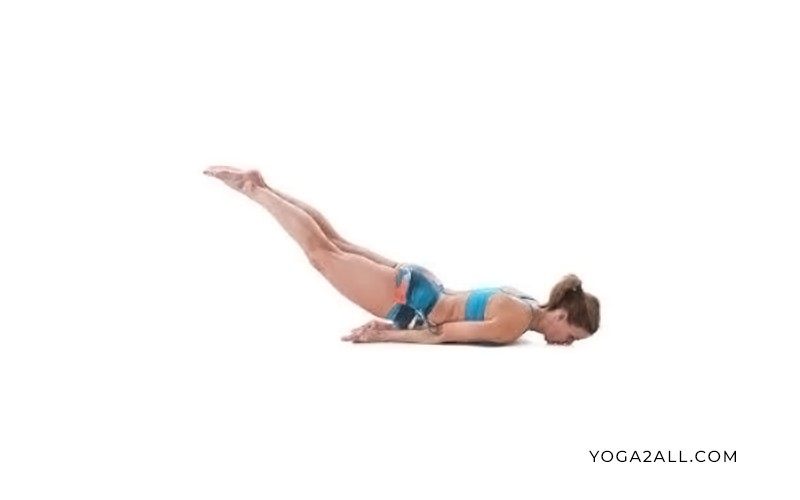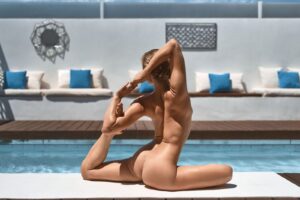
Locust pose is one of the most popular yoga pose in the entire yoga style. This pose is also known as Salabhasana or Shalabhasana or Grasshopper Pose. It is known as Grasshopper Pose, because the name of this yoga comes from the Sanskrit words “Shalabh” means “Grasshopper”. This is a very popular back-bend or spine-stretching pose, especially using to get strength of the upper back, middle back and to lift the weight of both the legs as much as high from the beginning position from the ground.
Discover The Benefits of Locust Pose:
The benefits of Locust Pose is immense. It increases flexibility, strength of the upper and middle back, coordinate and helps to increases the overall strength and stamina of your body.
Step To Practice Locust Pose:
- At first, lie down on your yoga mat on your belly with both the legs.
- Now keep your arms by your sides so that your palms can face up.
- Now, when you are ready to inhale, comfortably lift your legs, head and upper portion of your body off the ground. But remember, your hands remain on the ground for your support.
- Now breathe properly and try to relax your shoulders and muscles in the booty.
- Enlarge the crown of your head off from the toes; try to extend as much you can do through the spine.
- Stay in this position for at least 4-5 breaths and then you can release back to the ground on your yoga mat.

Locust Pose is one of the most popular intermediate backbend pose that tones as well as strengthens your entire back of the body. It is a pose which provides the foundation for deeper backbends, it is sometimes used in preparation for other yoga poses, such as – Bow Pose (Dhanurasana) Upward Dog Pose (Urdhva Mukha Svanasana) Upward Bow Pose Or Wheel Pose (Urdhva Dhanurasana) If you practice this pose on a regular basis, it will teach you the perfect alignment which is necessary to deepen your backbends with ease.
There are two variations in this yoga pose (asanas):
1. Half Locust Pose (Ardha Salabhasana)
2. Full Locust Pose (Poorna Salabhasana)
Salabhasana is generally practiced after Bhujangasana, this is one of the related pose that works on different part of our spine.







